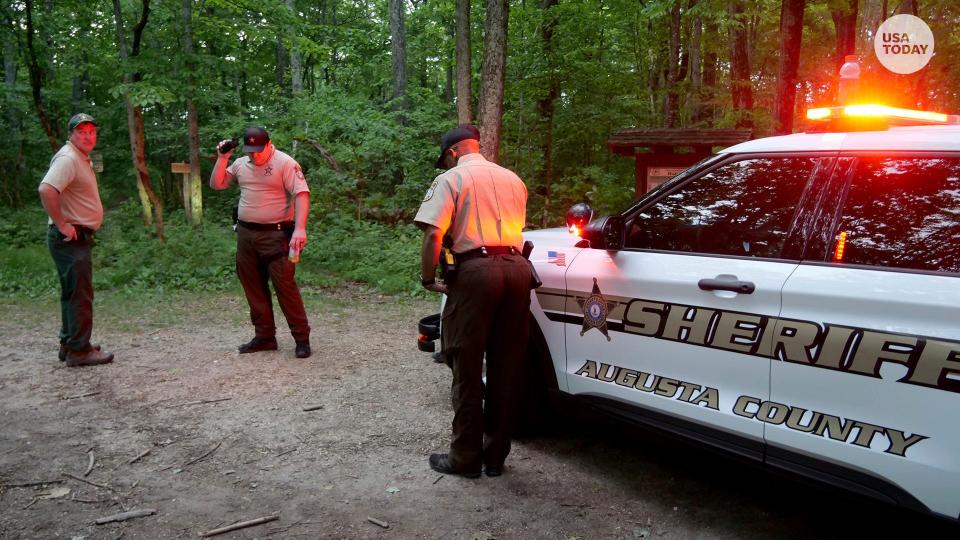What is hypoxia? What to know about the condition caused by low oxygen levels
It's still unclear why a private plane veered off course and crashed into a Virginia forest Sunday, but it's possible that a loss of cabin pressure could have rendered the pilot and passengers unconscious, according to the plane's owner.
John Rumpel, a pilot who runs the company the Cessna was registered to, told The New York Times the plane could have lost pressurization.
After a loss of cabin pressure, the plane's occupants could have suffered from a lack of oxygen, which can lead to hypoxia. A lack of oxygen after a loss of cabin pressure has been listed as the cause of other plane crashes, including the 1999 crash that killed professional golfer Payne Stewart and five others.
As federal investigators continue their probe into Sunday's crash, here's what to know about hypoxia:

What is hypoxia?
Hypoxia is the condition that occurs when a person is deprived of oxygen, which can be fatal if untreated, according to Dr. Jan Stepanek of the Mayo Clinic College of Medicine and Science. Stepanek said there are four types:
Hypoxic hypoxia: The most common cause of hypoxia is low amounts of oxygen in the blood. People may experience this when flying at high altitudes in an unpressurized aircraft, Stepanek said.
Stagnant hypoxia: This occurs when not enough oxygen gets to your tissues and can happen when people are in shock, experiencing heart failure or exposed to G forces, he said.
Anemic hypoxia: This can happen when you don't have enough red blood cells to carry oxygen to your tissues, which Stepanek said is often seen in people with anemia.
Histotoxic hypoxia: This is caused by toxins that prevent your cells from using oxygen.
What are the symptoms of hypoxia?
Hypoxia can be difficult to recognize without special training because it affects the brain and makes it difficult to think, Stepanek said. Some people may experience headache, shortness of breath, palpitations or numbness in their extremities, he said.
Everyone reacts differently to hypoxia and people may even experience a sense of euphoria, according to the Federal Aviation Administration. The Cleveland Clinic noted symptoms include:
Restlessness
Anxiety
Rapid heart rate
Rapid breathing
And severe hypoxia can cause:
Slow heart rate
Extreme restlessness
Bluish skin
Stepanek said research shows exposing someone to an elevation of 25,000 feet in an altitude chamber would cause them to be unconscious within about three to five minutes. At 45,000 feet, that estimate drops to nine to 10 seconds, he said.
"Ultimately you will lose consciousness and the result of that is you will lose the ability to remove yourself from the hazardous environment," Stepanek said.
What causes hypoxia?
Whenever people travel in an aircraft, they are exposed to a mild level of hypoxia, Stepanek said.
"If we go to higher altitudes, the pressure is decreased and as a result of that, lack of oxygen ensues," he said.
Exposure to carbon monoxide could also cause hypoxia, according to a recent flight safety bulletin from the Department of the Interior and the U.S. Department of Agriculture, Forest Service. Hypoxia is most often caused by illnesses that affect blood flow or breathing, including asthma, bronchitis, COVID-19, and sleep apnea, according to the Cleveland Clinic.
"With some of these other conditions, it's a very common problem that we deal with in medicine," Stepanek said.
How is hypoxia treated?
How hypoxia is treated depends on the underlying cause. When flying at high altitudes, "supplemental oxygen is the only solution," according to the FAA. When pilots suspect there is a lack of oxygen, they are trained to immediately put on the emergency oxygen system and descend to 10,000 feet, where one can breathe safely even while in an unpressurized aircraft, Stepanek said.
How can hypoxia be prevented?
Problems related to hypoxia are less common than in the early days of aviation, Stepanek said. Training, combined with advances in the automation of safety mechanisms can help prevent future incidents "but as long as humans are active in the airspace and are flying at altitudes, regrettably, problems with lack of oxygen will continue to happen because that's part and parcel of being in that environment."
Has hypoxia caused plane crashes before?
In 1999, a private Learjet carrying pro golfer Payne Stewart and five others flew for four hours before crashing in South Dakota. The National Transportation Safety Board determined the crash was likely caused by the "incapacitation of the flight crewmembers as a result of their failure to receive supplemental oxygen following a loss of cabin pressurization, for undetermined reasons."
Greek investigators listed incapacitation of the flight crew due to hypoxia as one of three direct causes of the Helios Airways crash that killed all 121 passengers and crew in 2005. Pilots did not recognize the cabin pressurization system was set to manual and did not identify the warnings and the reason for the activation of the warnings.
A slow or sudden decompression causing a loss of oxygen was one of multiple theories surrounding the 2014 disappearance of Malaysia Airlines Flight 370 carrying 239 passengers and crew, but aviation experts said the plane should have kept flying automatically toward Beijing and been visible on radar if that had occurred.
Contributing: Sean Lahman and Steve Orr, Democrat and Chronicle; The Associated Press
This article originally appeared on USA TODAY: What is hypoxia? Symptoms, causes and prevention explained

